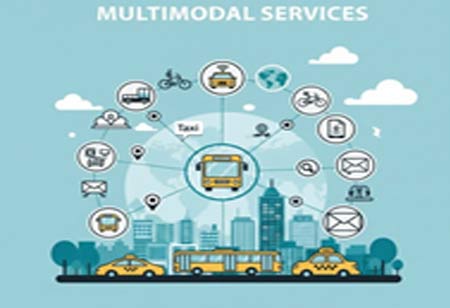THANK YOU FOR SUBSCRIBING
THANK YOU FOR SUBSCRIBING

By
Logistics Transportation Review | Wednesday, July 02, 2025
Stay ahead of the industry with exclusive feature stories on the top companies, expert insights and the latest news delivered straight to your inbox. Subscribe today.
Fremont, CA: Multimodal transport logistics is revolutionizing how businesses manage their supply chains by combining two or more modes of transportation within a single contract. This innovative approach incorporates road, rail, sea, and air transport to streamline logistics operations, optimize costs, and enhance delivery efficiency. In a global marketplace where speed and reliability are paramount, multimodal logistics not only meets these demands but also promotes sustainability by minimizing environmental impact.
Speed and Reliability: The Key Advantages
One of the standout benefits of multimodal logistics is its ability to improve delivery speed and reliability significantly. By utilizing various transportation modes, businesses in Latin America can navigate through different routes, avoiding delays that may stem from congestion or disruptions in a single mode.
For instance, if a shipping port experiences a backlog, goods can be swiftly rerouted to rail or road, ensuring that delivery schedules remain intact. This adaptability is especially vital for industries such as retail and manufacturing, where just-in-time delivery is crucial for maintaining efficient operations. The flexibility inherent in multimodal logistics allows companies to respond promptly to changing conditions, ultimately enhancing service quality and customer satisfaction.
Environmental Sustainability and Security
Apart from operational efficiency, multimodal logistics plays a crucial role in promoting environmental sustainability. By strategically selecting eco-friendly modes of transportation, companies can effectively reduce their carbon footprints. For instance, rail and sea transport are known to emit significantly less greenhouse gas per ton of cargo compared to road or air transport. This shift not only aligns with global sustainability goals but also optimizes routing to reduce unnecessary fuel consumption.
Integrating various transportation methods enhances cargo security and lowers the risk of damage. Each mode has unique strengths; for example, rail transport offers stability for heavy goods, while air transport provides speed for perishables. With effective coordination, multimodal logistics can ensure that products are transported under optimal conditions, maintaining their quality and safeguarding their value. A single contract overseeing the entire logistics process further simplifies accountability and reduces the chance of errors that can arise when transferring goods between different carriers.
Flexibility and Global Reach
The inherent flexibility of multimodal transport logistics is another compelling advantage. This system enables companies to adjust to seasonal fluctuations in cargo volumes and respond to unexpected challenges, such as natural disasters, without disrupting supply chain continuity. In a rapidly changing global market, this agility is incredibly valuable.
Multimodal logistics facilitates global trade by enabling access to remote and underserved regions. By combining different transportation methods, including sea freight for international shipping and road transport for inland delivery, businesses can reach customers across diverse geographical locations. This expanded reach fosters growth and competitiveness as companies tap into new markets, contributing to a more interconnected world.
I agree We use cookies on this website to enhance your user experience. By clicking any link on this page you are giving your consent for us to set cookies. More info





